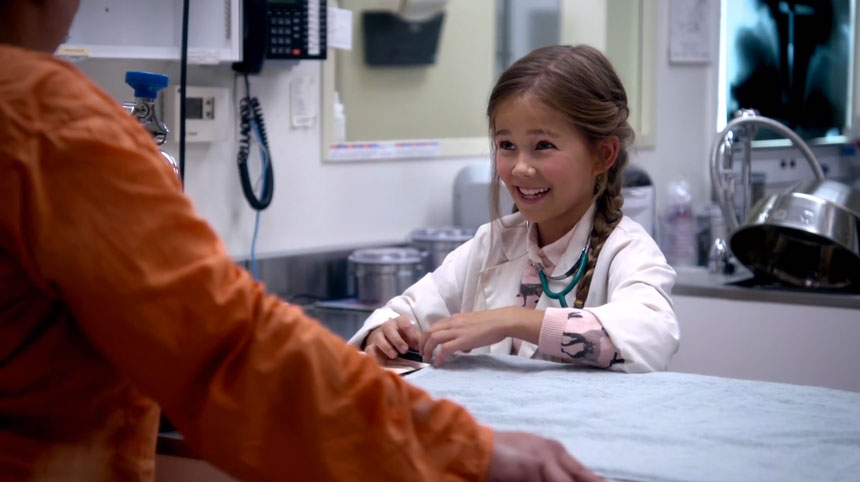2018 is shaping up to be an exciting year for online marketing, as the rise of data analytics, live video streaming and native advertising permeate a wide variety of business strategies. With online marketing becoming more crowded, businesses are looking for more effective ways to reach their target market, making segmentation more critical than ever before.
One of the biggest demographics that marketers are tapping into are women, who make up more than half of the global population and are by far the biggest users of most social media sites. Women also exhibit different consumption trends and behaviours than their male counterparts, which means marketers must spend more time and energy dissecting this large and growing segment of the market. That’s the view of marketing expert Robert Craven, who believes firms must change their approach to marketing to women or risk getting left behind.[1]

Strategizing The Approach
To be fair, it’s impossible to create a uniform strategy for marketing to all women. The goal of female specific advertising is not to appeal to all women all the time, but to understand how women reach their purchasing decisions and apply that understanding to our marketing campaign. Since the advertising industry is still male dominated, many strategies designed to appeal to women (or both sexes) fall short of speaking to women. According to Martha Barletta, author of the book Marketing to Women, 91% of women say, “Advertisers don’t understand us”[2] and as a content marketer I agree.
The Data
Incredibly there are still many marketers who don’t believe in creating a female specific outreach strategy. Perhaps they might want to consider the following data:
- Women make up about 51% of the adult population, and as they age, represent a bigger share of the market. Women are 54% of consumers aged 50 and over. They represent 57% of all consumers aged 85 and over. In the United States alone, women control about 60% of personal wealth since they are more likely to outlive their spouse.
- Women account for $7 trillion in spending and influence 85% of all consumer purchases. Women are the main catalysts behind the purchase of cars, healthcare, housing, food and vacations.[3]
- Three-quarters (76%) of online adult women use Facebook. Women also make up the majority of users on Twitter, Instagram, Tumblr and Pinterest.[4]
When it comes to actual purchasing trends, women dominate the following industries:
- Shopping: women spend an average of 8.5 years of their life shopping.
- Beauty: women are by far the biggest consumers of beauty products, and are more likely to consumer things like fashion magazines and relative TV shows.
- Health and Fitness: Research has shown that women tend to be concerned about illness and death, and are therefore more likely to spend money on preventative measures to remain fit and healthy.
- Home Furnishings: Women are usually responsible for today’s mass-luxury industry, even for dual income households.[5]
- Personal Products: Personal products cut across beauty, health and other segments of the market. In the United States alone, women spend more than two times on personal products than their male counterparts.[6]
Marketing to Women Successfully
According to Emily Carroll, manager of strategic planning and consumer insights at LeapFrog Interactive, “Women tend to be more loyal to brands and because they maintain a great deal of the buying power.” Carrol adds, “Social media and email represent the best ways to get a brand in front of women consumers. You have to be where they are to talk and give advice.”[7]
Therefore, successful marketing campaigns targeted toward women are visual, conversational, and personal; they make active use of social media tools, such as hashtags. Products that gets reviewed by others and encourage sign ups and engagement are also more likely to succeed with the female demographic.
Popular Ad Campaigns Targeting Women
We’ve seen a surge in inspirational advertising campaigns targeting women in recent years. Below is a look at five of the most popular campaigns.
Ariel – #ShareTheLead (video)
In 2016, Ariel India launched an amazing campaign that Sheryl Sandberg of Facebook called, “One of the most powerful videos I have ever seen.” The ad shows a father writing a letter to his daughter apologizing on behalf of every father who has neglected housework. The video closes with the line: “Why is laundry only a mother’s job?”
Barbie – Imagine the Possibilities (video)

Barbie didn’t always set the best example for young women, I was always more of an action figure girl. Recently though, the brand launched a powerful campaign teaching girls they can be whatever they want. Various possibilities were presented in the 2-minute video, showcasing Barbie’s evolution over the decades.
Ram Trucks – Courage Is Already Inside (video)
Ram Trucks broke all sorts of stereotypes with its 2015 ad urging women to explore new possibilities. The ad showcases a wide range of women and asks the question, “Have you ever thought I could never do that?” This campaign proved that some of the best campaigns can challenge women’s assumptions about themselves by getting them to think differently about their own liberation.
Always – #LikeaGirl (video)
Always sells feminine hygiene products, and is a well-known brand among women. In 2014, it released its groundbreaking advertising campaign #Likeagirl, which sought to counter negative female stereotypes. Suddenly, running like a girl, throwing like a girl and fighting like a girl were no longer seen as negative, but empowering. The ad asks, “When did ‘doing something like a girl’ become an insult?”
Verizon – Inspire Her Mind (video)
In a mere 62 seconds, telecom giant Verizon shows the limitations placed on women in pursuing a career in science and technology. The ad follows a girl from baby to teenager. It says, “Our words can have a huge impact. Isn’t it time we told her she is pretty brilliant too?”[8]
These popular ads all have something in common. They engage, inspire and encourage women to think differently about themselves and to challenge preconceived stereotypes. By doing so, they have the potential to tap into women’s brand loyalty.
Tips for Reaching Out to Women
The female demographic offers huge opportunity for marketers, and brands that understand what women want are in a better position to capitalize. Brands looking to tap into the female demographic should keep the following tipis in mind:
- Build relationships. Women are more likely to respond to campaigns that are personalized, conversational and are in tune with their psychology. And don’t just stop at the surface. Use data analytics to really dig into your female audience. That will help you develop a campaign that speaks directly to your target market.
- Avoid negativity. Women are much more likely to respond to positive campaigns rather than negative comments about why they should avoid a competitor. In other words, give women positive reasons for doing business with your brand.
- Respect women’s buying habits. Women are much more likely to shop around before making a purchase. If your product is better than your competitor’s, be sure to spell out in detail why that’s the case. Make sure you also provide information about warranties and after-sales service. Women will look into the painstaking details to make a decision about a product.
- Avoid extremes. Women are rarely extreme in their shopping habits. Your marketing campaign should therefore avoid going to any extreme in reaching out to your audience. Remember, the goal is to cater to all their needs.
- Avoid stereotypes. I mentioned earlier that advertising to women isn’t some uniform strategy or a blanket process that will suddenly transform all women into potential customers. The goal is to speak to their unique needs using language and themes that resonate with them. As such, you should avoid stereotyping women (positive or negative).[9]
Marketing to women doesn’t have to be overly complicated. Depending on your business, you know which demographics are more likely to consume your products and services. Nobody is telling you to deviate from that demographic or disregard everything you already know about your target market. However, marketing to the female splice of your market in unique and original ways will help you get a more favourable response from your female audience.
There is no one-size-fits-all method for reaching out to women. Marketing to them requires the same level of research, trial and error and due diligence as other marketing campaigns. If your goal is truly understand your target market, you should be prepared to do everything necessary to uncover their needs and motivations. One of the best places to start is to acknowledge there are differences between men and women, and to begin marketing on that basis.
[1] Robert Craven. “The truth about marketing to women.” Marketing Donut.
[2] Robert Craven. “The truth about marketing to women.” Marketing Donut.
[3] Pam Danziger (May 24, 2016). “Marketing To Women: You Can’t Afford Not To.” MediaPost.com.
[4] Barry Moltz (March 27, 2014). “6 Ways to Market Your Brand to Women.” American Express.
[5] Good Cents (September 2, 2016). “Top 5 Things Men and Women Choose To Spend Money On.”
[6] Michael Cheng. “Men vs. Women: Who Spends More And On What?” Life Hack.
[7] Barry Moltz (March 27, 2014). “6 Ways to Market Your Brand to Women.” American Express.
[8] Michelle Perrett (March 7, 2016). “International Women’s Day: 10 inspiring ads celebrating women.” Campaign Live.
[9] Robert Craven. “The truth about marketing to women.” Marketing Donut.